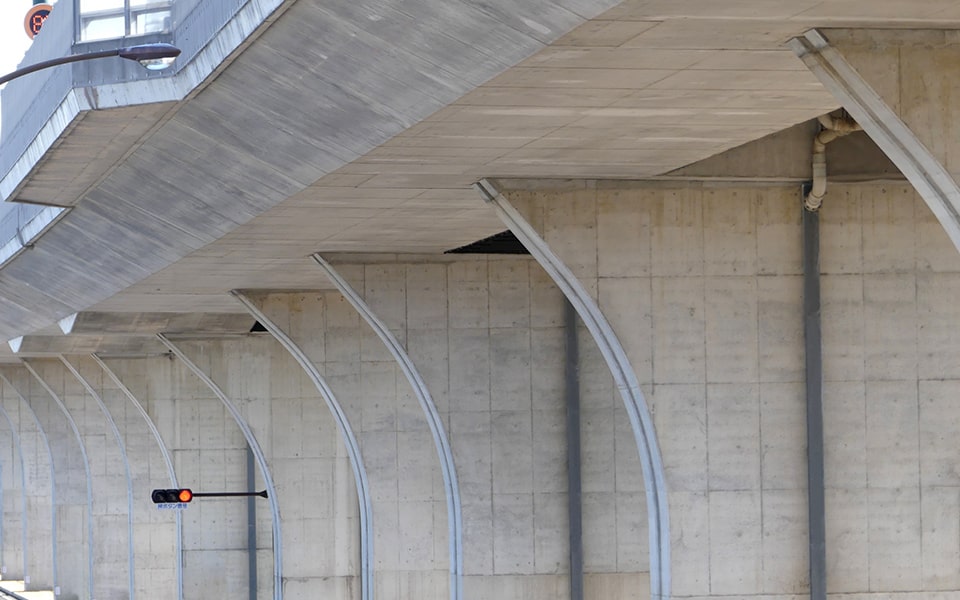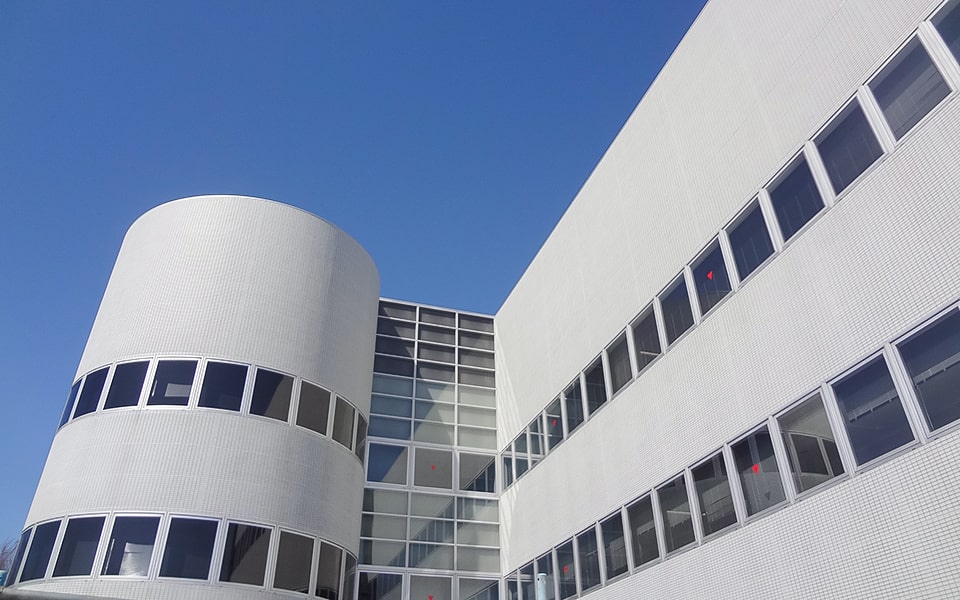
Building Retrofit Technology Internal Pressure-Filled Joint Reinforcement Technology
Restores concrete strength and extends service life
This revolutionary method restores the strength and extends the service life of concrete structures that have been damaged by aging or earthquakes. While the conventional resin injection method only restores the surface layer of concrete, the IPH method is an internal pressure-filled joint reinforcement technology that can also restore the functions of the inside of the structure.

IPH (Internal Pressure Filling Joint Reinforcement) Method
High-density filling method that sets itself apart from conventional resin injection methods
Conventional resin injection methods aim to seal surface cracks to prevent rainwater from penetrating into the frame, but the IPH method can fill even minute cracks of 0.01 mm or less, reinforcing the frame from the inside and integrating the frame. In addition to restoring durability, it is the only high-density filling method that can increase the adhesion strength of reinforced concrete and provide high corrosion prevention, and has received a technical evaluation from the Japan Society of Civil Engineers.
Features of the IPH Method
- IPH METHOD -
1.High-density filling
The high fluidity of the epoxy resin for injection enables more natural injection while utilizing capillary action, with a stable low injection pressure of 0.06 N/m2 , which is defined as 0.4 N/m2 or less in the general specifications for renovation work.
2.Injection into microcracks
Filling of fine cracks has been confirmed by electron microscope measurements of cores taken at actual sites, showing dense filling results even for fine cracks down to 0.01 to 0.02 mm.
3.Improved strength and durability
The ability to fill microcracks increases the strength of the concrete frame, leading to improved durability and a longer service life. In addition, injection after sectional repair integrates the existing frame with the repaired material to prevent re-flaking.
4.Expected to be effective in stopping water
It is expected to be effective as a waterproofing method not only for structures but also for buildings, since it can be used to fill in minute cracks and wet cracks that are permeable to water.
5.Neutralization inhibitory effect
Components of the resin leakage prevention cement paste penetrate into the internal rebar. This paste has a rust-preventive effect on the rebar and re-alkalizes the concrete, resulting in a long-lasting neutralization inhibiting effect.
6.Visualization of injection
The injection equipment uses a highly transparent capsule, allowing visual confirmation of the injection status, how much has been injected, and the amount of injection at a glance.
Difference between IPH and conventional construction methods
- IPH METHOD -
Conventional resin injection methods are insufficiently effective because air inside the structure impedes the penetration of the injected material, but the IPH method allows stable filling over a wide area and to a high depth by removing the air inside the structure and replacing it with injected resin.
Schematic diagram of resin filling for IPH construction method
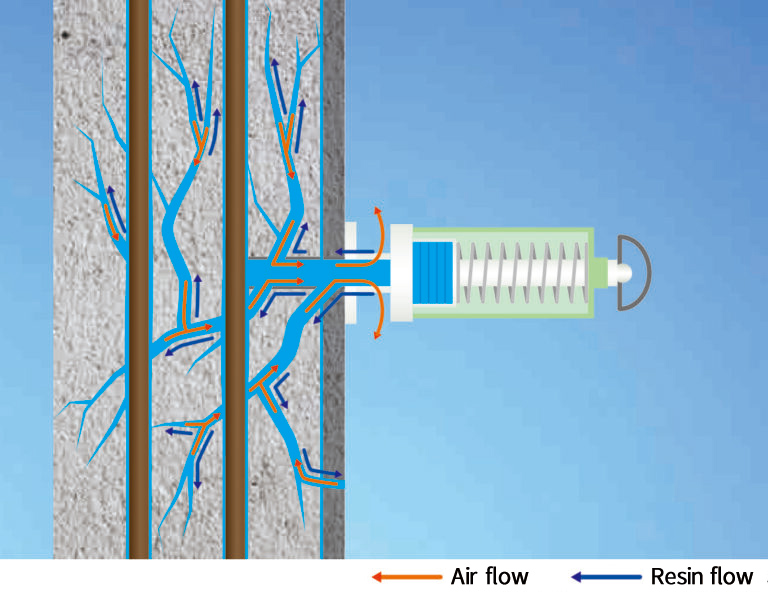
By injecting highly fluid epoxy resin at very low pressure, the capillary action works, and the dense filling is possible, as if nutrients were penetrating into the veins of plants. The independently developed injector has a function of discharging internal air which prevents the penetration of resin, and replaces air and resin.
Model of resin injection of conventional method
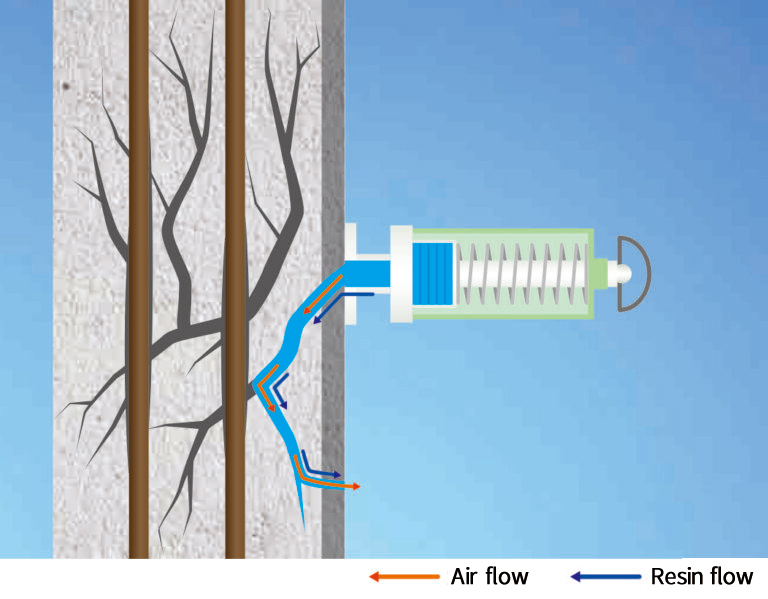
In the conventional resin injection method, the surface is sealed to prevent material leakage during injection. As a result, the internal air resists the injection pressure and the resin stays in the repair of the surface layer of the concrete, and the resin cannot reach the inside of the structure.
State After Implementation of Internal Pressure Filling Bonding Reinforcement Using the IPH Method
- IPH METHOD -
Verification of Resin Injection in Tiled Exterior Walls
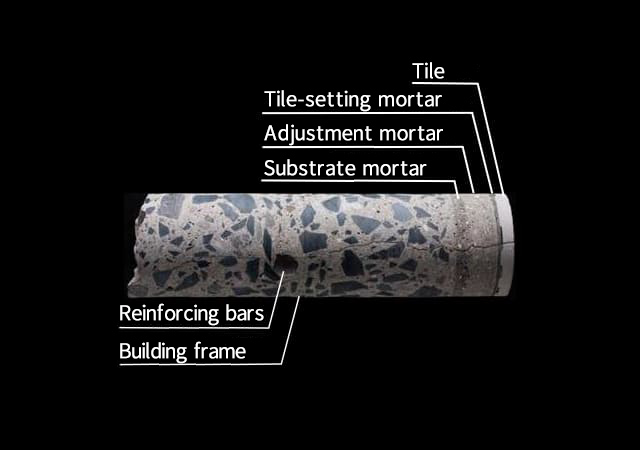
After applying the IPH method to the tiled exterior wall, a core drilling was performed. In the image, to what extent has the resin been injected into the fine gaps surrounding the tiles, mortar, concrete, reinforcing bars, and aggregates?
Condition Under Blacklight Illumination
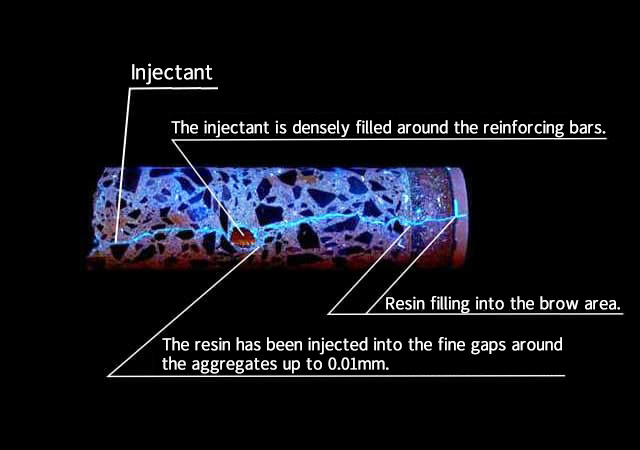
When a black light is shone on the core, the injected resin material emits a blue light. It confirms that the resin has penetrated firmly into the fine gaps around the reinforcing bars, around the aggregates, and between each layer.
The application of the IPH method
- IPH METHOD -
We provide repair and retrofitting works for civil engineering, infrastructure, and architectural structures, addressing seismic strength concerns in all types of concrete, as well as waterproofing projects.
Certified by the Japan Society of Civil Engineers (JSCE) for technical evaluation
- IPH METHOD -
The IPH method is the only injection method recognized by the Japan Society of Civil Engineers (JSCE) for technical evaluation, having presented papers to the Architectural Institute of Japan and the Japan Concrete Institute as a technique capable of reducing the lifecycle costs of social infrastructure facilities.
Certification of Technical Evaluation by the Japan Society of Civil Engineers (JSCE)
Technical Evaluation by the Japan Society of Civil Engineers (JSCE): No. 0009
Registration in the Ministry of Land, Infrastructure, Transport and Tourism's New Technology Evaluation System (NETIS)
Registration Number: CG-070007-V
Patent Granted
Patent Registration Number: No. 5074118
